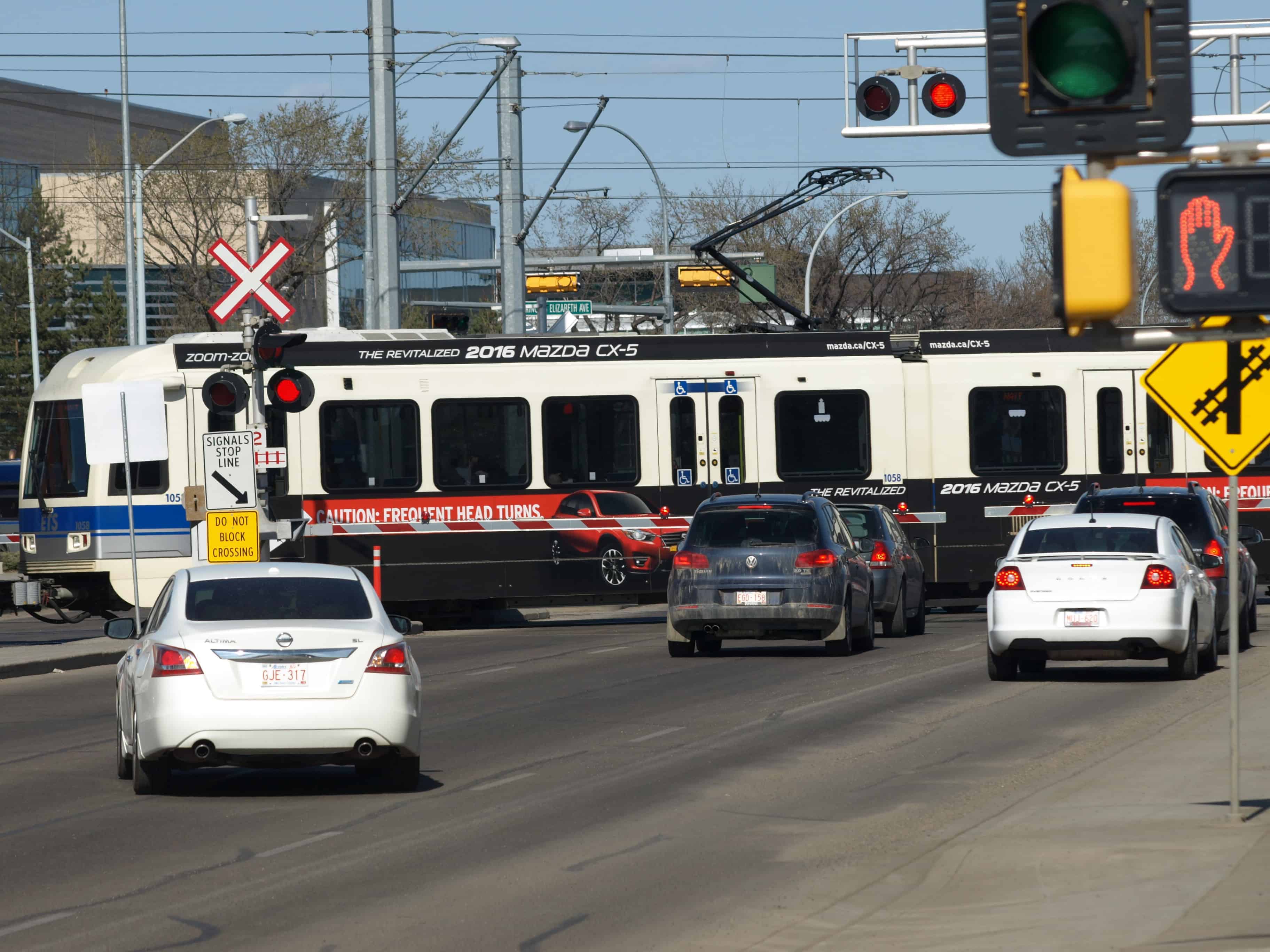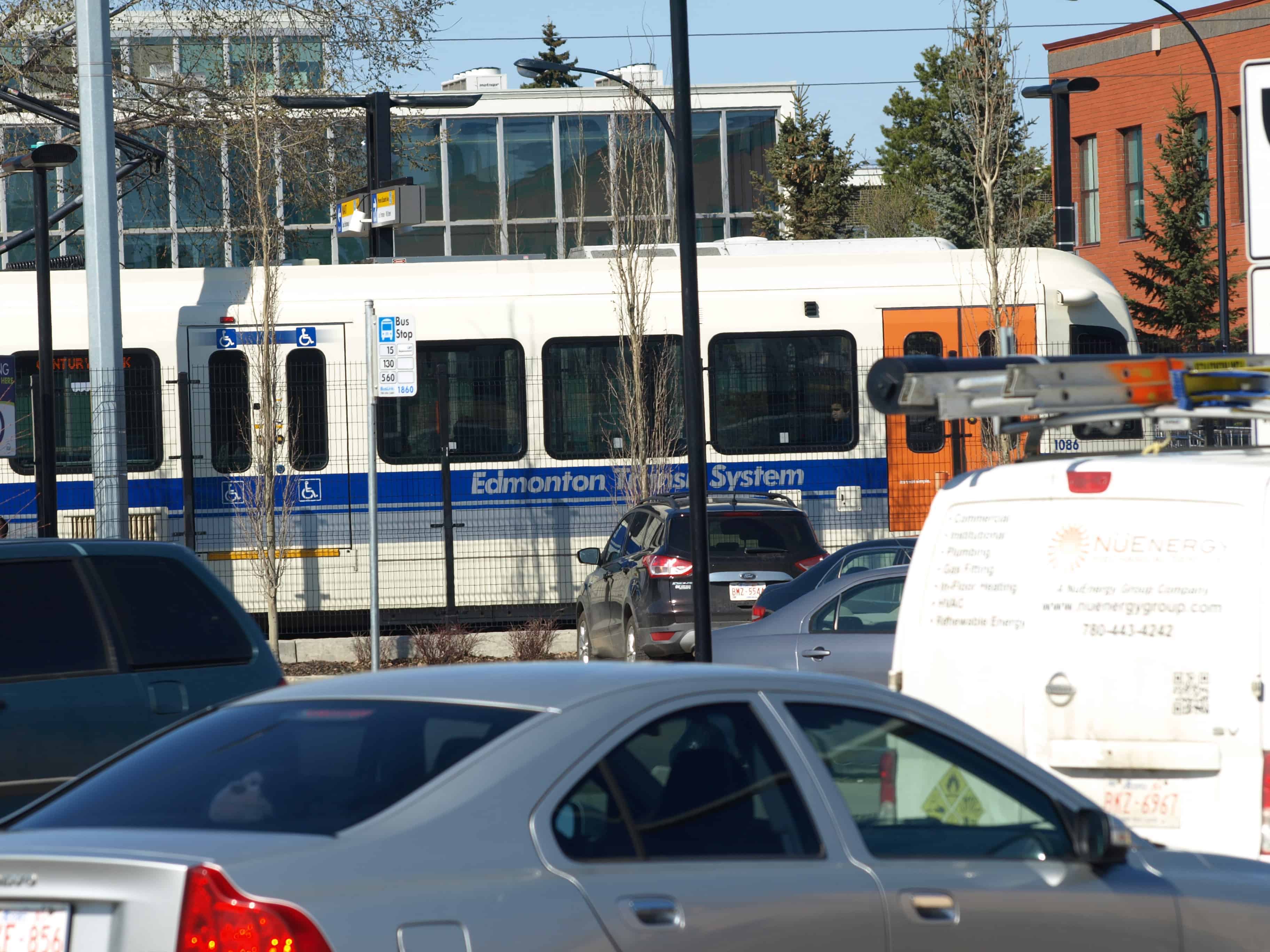Transportation for interactive communities
These days, one gets the impression that the city’s planning council is filming a Western shoot-em-up inside city hall, with one angry hombre sauntering up to another and pronouncing, “This town ain’t big enough for the both of us.”
Motorists against Edmonton Transit System, private against public transportation.
The showdown happens about 20 times a day whenever the LRT crosses 111 Avenue or Princess Elizabeth Avenue, forcing traffic backups on either side.
Transit users had been complaining for the past two years about the delays to the NAIT LRT. Now that it’s up and running, drivers are complaining about the delays to traffic. Is this a Mexican stand-off or time for a shout out?
Truth is, the city does not seem to be able to accommodate both interest groups, and space is not the reason. Public and private transportation do run at cross purposes to each other.
North America has always had a car fetish. Cars are the most convenient, fast and sanitary means to travel in the city. I test this theory out regularly in the winter when I don’t want to cold-start my car. Instead, I wait 15 minutes for a bus, cramming next to someone who does not place the same value on personal hygiene as I do.

Automobiles have become a symbol of our independence, freedom, and social status. This obsession has directed our city design. Street grids transition seamlessly into main arteries in and out of the core which feed into highways.
Whenever our convenience is compromised by a new LRT line, “point of privilege” drivers are in an uproar. Imagine the indignation, having become accustomed to having the right of way, to wait five or 10 minutes while an LRT interrupts our schedules. Instantly this becomes a social crisis, overshadowing critical issues like potholes and snow removal.
We have presumed cities belong to the automobile, not to people. This vision is currently being challenged. We are now increasingly considering quality of life as a social phenomena, not simply a matter of enshrining individual privileges and conveniences. This incorporates exploration of how we live together in a community, and priority to public transportation as more efficient and cost-effective.
Cars and a street system enabling drive through, non-stop traffic are now being considered an impediment to healthy urban life. Consider development of the Ice District in the city centre and the revitalization of the nearby Quarters. All this is designed to make downtown more people friendly. Attractions are accessible on foot or by transit, increasing attendance at special events and heightening profitability of ancillary commerce.
However, these adaptations also impede car access to and through the city core. We cannot have it both ways. To make neighbourhoods liveable and appealing requires density and diversity. This involves people from different demographics moving and mingling, stopping to window shop, chat, eat or attend a concert. Community-building stuff. This is what makes urbanites happy and makes communities work.

Cars create exactly the opposite dynamic. When you are driving, you are not interacting with anyone, other than perhaps the person in the next lane, and then only to raise a finger or shout. Vehicles impede the type of civic interaction that we actually need to be facilitating, such as pedestrian walkthroughs.
The issue then is not about space for both cars and transit, but about our vision for happy communities.
Do we want to maintain our city as a thoroughfare where people drive from one end to the other without slowing down or interacting? Or do we want a more metropolitan view where people park their cars to walk, shop and mingle?
In upcoming articles, I will discuss examples of cities and neighbourhoods, including Alberta Avenue, which have made strides in transitioning from automotive culture to that of interactive communities. I will also search for examples of where they have managed to keep buses running on schedule and ensure everyone aboard adheres to publicly acceptable hygiene standards. Not sure what success I will have. Stay tuned.
Feature Image: Public and private transportation run at cross purposes to the other. Credit: Aydan Dunnigan-Vickruck







